| |
Talayotic Menorca in 3D: Sant Agustí Vell
The northern talayot of Sant Agustí Vell or Ses Bigues de Mata (declared a Site of Cultural Interest) is one of the talayots that has aroused the greatest interest over the course of contemporary history, thanks to the monumental nature of its internal chamber, which is unusual on Menorca.
With a circular layout and truncated conical profile, it was built in courses of blocks which are much larger and more regular at the base than higher up. The interior was emptied out in days gone by for farming use, and its original function cannot therefore be determined. However, given its form and a number of the adjacent structures, the interpretation is that it was a distinctly public building of symbolic meaning for the community. It is located at the prehistoric settlement of Sant Agustí, included in Component 4 of Talayotic Menorca, where a number of other structures also still stand, such as houses, shrines and areas for work and leisure.
The goal of the project was to obtain as lifelike as possible a digital replica, and the digitalisation process (from the taking of photographs to the audiovisual production) therefore employed a series of methodologies serving to achieve the intended photo-realistic finish for each of the sites. Some of the projects involved more than 3,000 photographs being taken, and then processed in high-quality models. The end result comprised photogrammetric models of between 60 and 200 million polygons, depending on the model.
The documentation efforts were financed with Next Generation EU funds transferred from the State to the Autonomous Region of the Balearic Islands, and then passed on to the Consell Insular de Menorca (CIM), which has responsibility for administering the island's historical heritage. The new digital content will be used to facilitate the conservation, research, cataloguing, restoration and showcasing of this element of Menorca's historical heritage.
Produced by REM Experience.
|
Talayotic Menorca in 3D: Galliner de Madona hypostyle hall
The Galliner de Madona hypostyle hall, located in Es Migjorn Gran, is part of the Talayotic Menorca candidacy for UNESCO World Heritage. The hypostyle halls are spectacular stone constructions where the roof, made up of stone slabs, is supported by several columns scattered throughout the structure.
With 3D imaging we can obtain a reliable record in case the monument needs restoration. In turn, it can also be used to generate hypotheses about construction techniques, study its face or the typology of the materials used, among other archaeological and architectural studies.
The creation of this 3D model, by the archaeologist Bruno Parés Sansano, allows all those interested to explore, just as light does, each of the columns and stones that form the Galliner de Madona hypostyle hall. 3D documentation and virtual visits allow the viewer to observe the monument from all angles, visit its interior and start conversations about its use and construction.
With the new scenario that emerging after the COVID-19 pandemic, museums and institutions dedicated to safeguarding heritage must make a clear commitment to digitizing sites and collections. Not only will they obtain very valuable images of particular sites, but they will also create a resource from which one can visit monuments from the comfort of home. The precision 3D model is a good heritage resource to document the buildings of our prehistory and thus make them accessible virtually.
|
Talayotic Menorca in 3D: the Torrellisar naveta
In Alaior we find the funerary naveta of Torrellisar Vell, also called “sa Cova de ses Ratespinyades”. Dated between 1400 and 800 BC, it is an original monument, exclusive to Talayotic Menorca.
This circular naveta has an exterior face built with stone blocks in horizontal rows forming a slope, with the door located to the west. Along with the Llumena naveta, they are the only two circular-shaped navetas that have a chimney with access to the upper floor.
The room is ovaled with rough stones in horizontal rows and is covered by four large flat slabs. The integrity of the building is currently threatened, as one of the roof slabs is broken down the middle, with one half on the ground; it could, therefore, collapse.
OBJECTIVES
- The main purpose of this project is the 3D imaging, using the digital photogrammetry technique, of the Torrellisar Vell funerary naveta, both of the exterior and interior of the monument (scaled 3D models in .obj format, which can be opened with all 3D editing programs; and in .blend format, which is the most widely used free software program).
- With the 3D imaging, the orthophotos of the ground plan, elevations and sections of the current moment have been generated with the highest precision (in high resolution .jpg format 20,000 x 20,000 megapixels).
- With the 3D photogrammetric model, an informative virtual tour of the monument has also been rendered to show the results of the project and bring the monument closer to the world (found in 4K, HD and in light format for mobile devices).
These 3D documentation techniques are relatively new in the heritage field, but very effective thanks to the quality of the renders, the short investment time it requires (compared to archaeological field drawing) and because of the fact that it is a non-invasive technique causing no risk to the documented heritage asset. It also allows us to have a reliable record in case restoration of the property is needed.
This type of documentation reflects reality with millimeter precision and allows us to have a reliable image of the heritage asset at a specific date. This technique has, therefore, revealed itself as a very useful tool for studying the state of conservation of Torrellisar Vell and its degree of degradation.
In this way, based on the 3D document, an action plan can be carried out regarding the conservation and maintenance of the asset, paying special attention to the parts that present the greatest degradation. It also allows one to have a reliable record for restoration purposes. This type of imaging can also serve to generate hypotheses about how the property was constructed, study its walls, the typology of the raw materials used, among other things of archaeological, architectural or historical value.
The creation of this 3D model makes it easier for all those interested to be able to know what the interior of the property is like and go through, just as light does, each of the stones that make up the funerary naveta of Torrellisar Vell. This is a very powerful informative and educational resource, which allows this exceptional Menorcan prehistoric monument to be seen all over the world.
|
Becatalaiotica
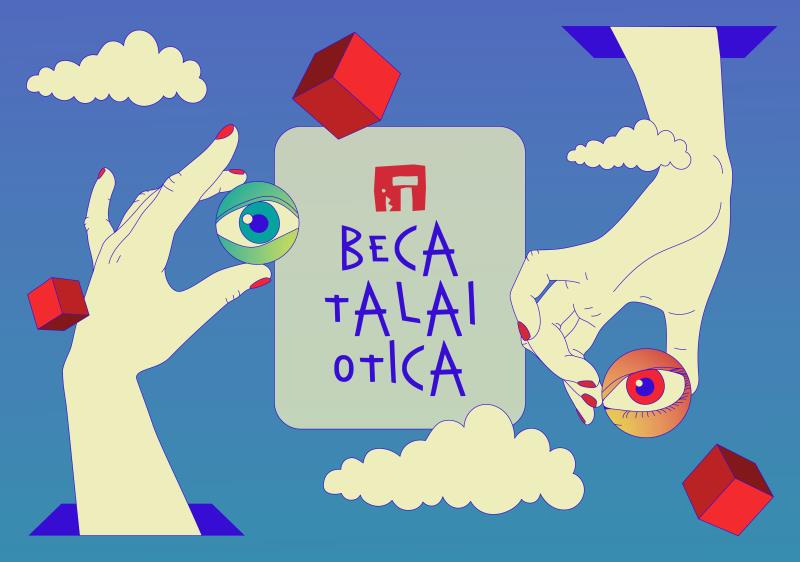 Becatalaiotica Becatalaiotica is a cultural project created by the Amics del Museu de Menorca association with the aim of giving visibility to young talent, of claiming the inspiring value of the landscape and promoting Talayotic Menorca among new audiences.
Five students, between 18 and 28 years of age, comprise this free event that will take place in different Talayotic Menorca sites. Any discipline or method of expression is valid. The association is looking for critical, and artistic, essays or performative proposals of any nature as long as they give fair importance to scientific knowledge.
Entry form
The assisting audience is a crucial part in evaluating the originality, content and evocative power of each proposal. The finalist who achieves the best evaluation will be granted a 2.000 € scholarship.
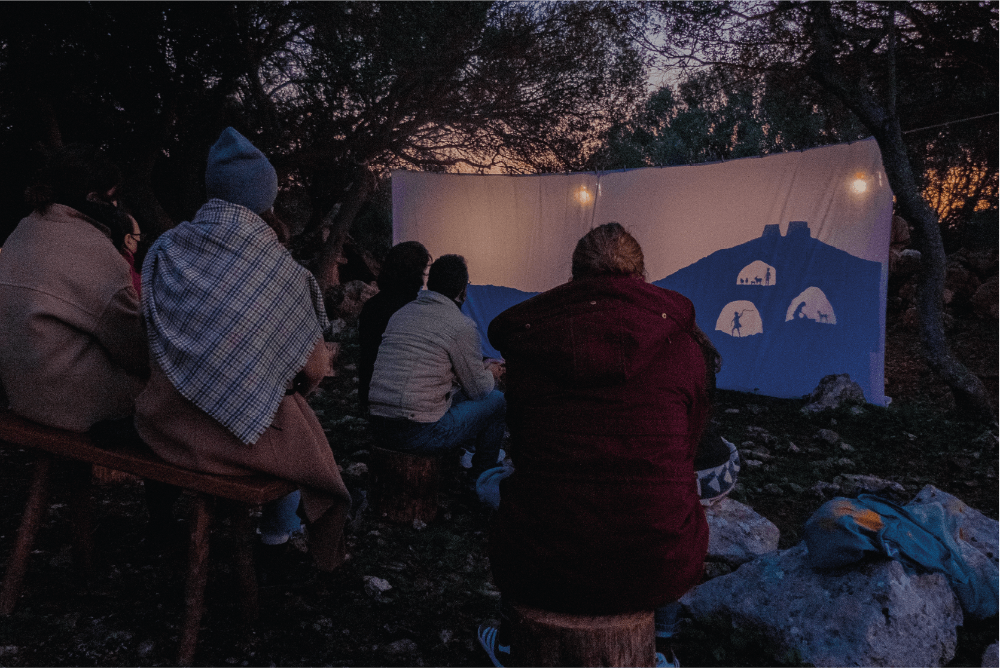 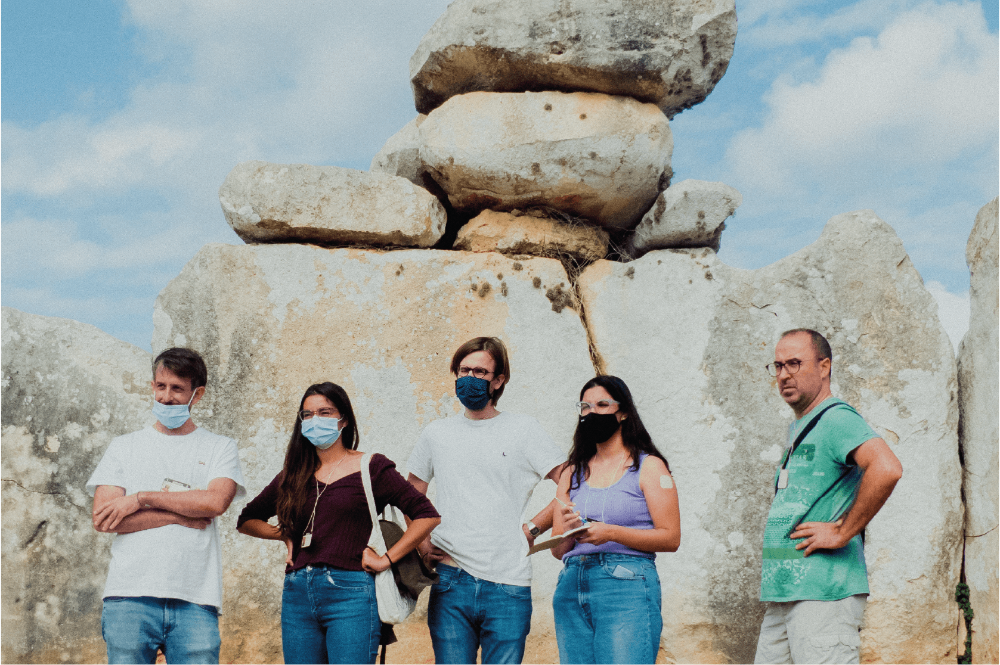 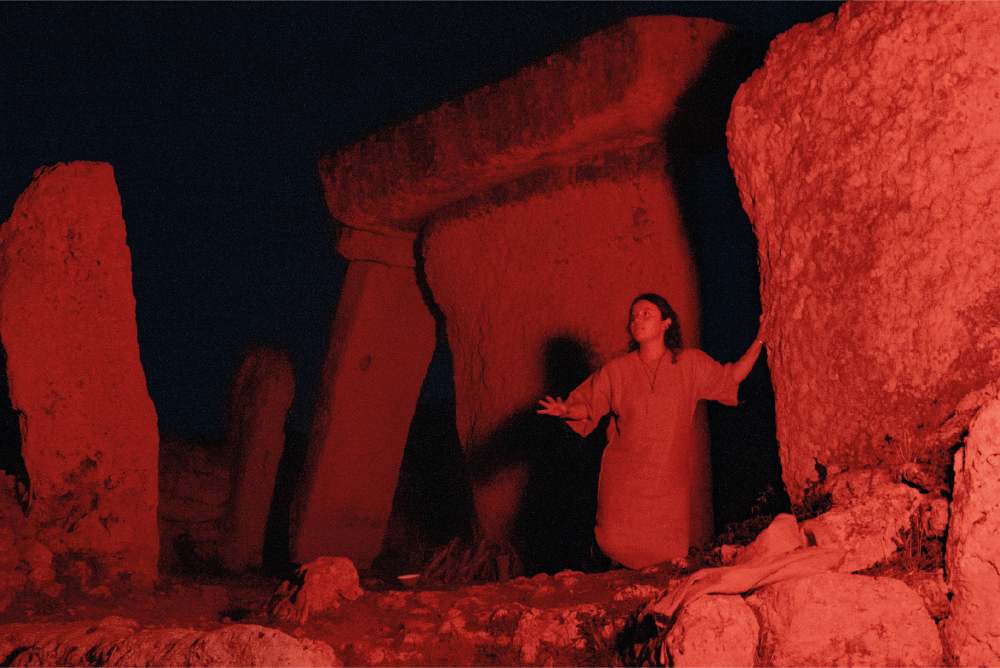 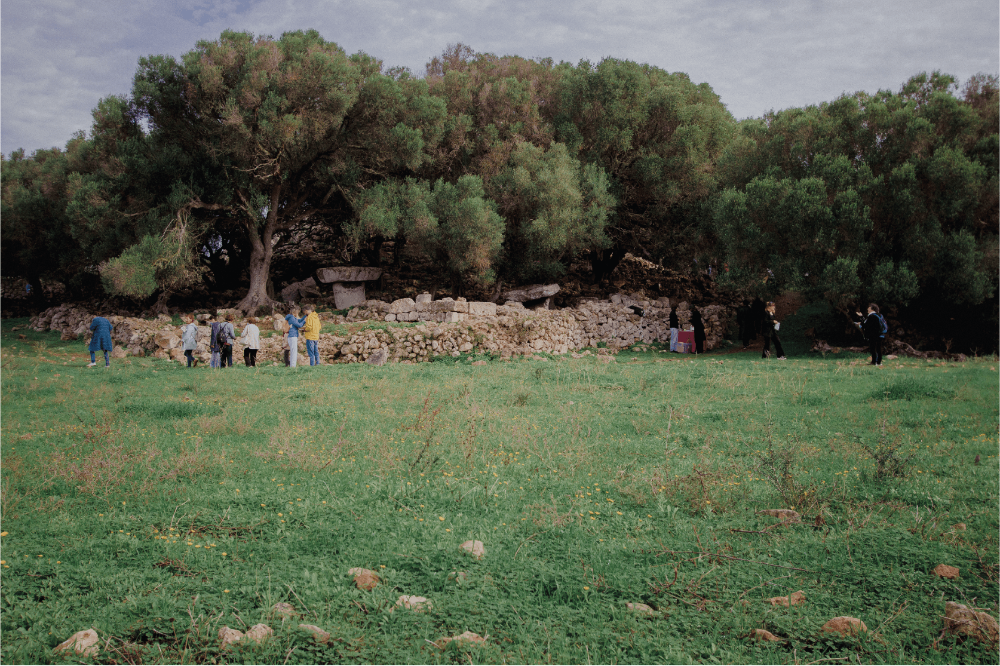 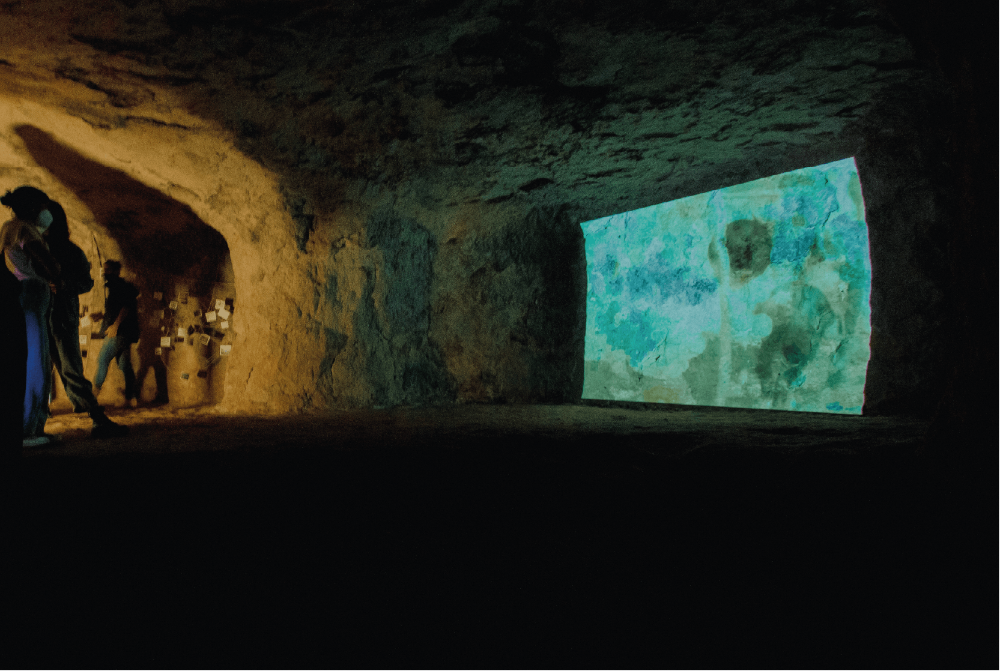 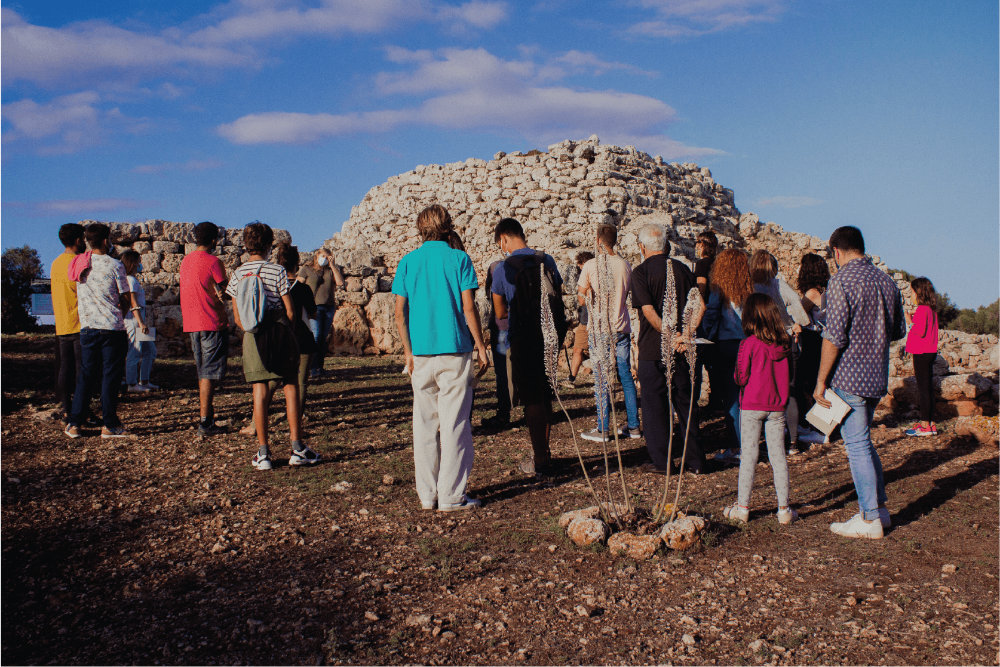 DO YOU WANT TO PARTICIPATE?
DO YOU WANT TO PARTICIPATE?
If you are between 18 and 28 years of age and you live in Spain, you can participate by filling out and sending this entry form. You have until June 2 at 11:59 p.m. to do so. You can download the contest rules at this link.
The selection process consists of 3 phases:
1. Entry selection. A group of professionals from the cultural sector of Menorca will select 10 entry forms from all those received.
2. Design and pre-selection of event proposals, during June and July. The 10 selected participants have a series of online meetings with the organizers, from which 10 event proposals must come out. The group of professionals and the organising team choose 5 of these 10 proposals.
3. Preparation and execution of events during September and October. The authors of the 5 selected proposals come to Menorca to carry out the events in 5 different Talayotic Menorca sites in front of a real audience that will evaluate the proposals. The contestant with the highest score will win a €2,000 scholarship.
DO YOU WANT TO ATTEND BECATALAIOTICA EVENTS AS A SPECTATOR?
Starting April, the participant, title, place and date of each of the events of the Becatalaiotica 2023 edition will be made public.
If you want to come, you just have to sign up via email beca@menorcatalayotica.info or call/send a Whatsapp to 608 163 934.
What role will you play? You just have to enjoy the event and the space. Afterwards, we will discuss and reflect on what we have seen. And in the end, you will have to evaluate the proposals through a simple questionnaire. Remember that the author of the best valued proposal will receive a €2,000 scholarship.
For more information: beca@menorcatalayotica.info or tel. 617 840 204.
|
Talayotic Menorca in 3D: the Calescoves anchorage
The anchorage at Calescoves, which lies on the southern coast of Menorca, was partially excavated in 1970s and the 1980s by members of the Complutense University of Madrid, the Museum of Menorca and the Centre for Underwater Research of Menorca. During these tasks a large quantity of materials from the 3rd century BC to the 1st century BC were located, including amphorae fragments and other pottery vessels produced in Ibiza and the South of the Italian Peninsula.
The cove’s seabed still preserves a large quantity of archaeological remains, whose conservation is at risk due to the current intense anchorage activity of vessels in the cove. For this reason, in 2017 the Insular Council of Menorca requested the Friends of the Museum of Menorca association to conduct a systematic underwater survey of the cove’s seabed with the aim of protecting these archaeological materials.
An agreement was signed by the Insular Council and the Government of Catalonia to bring to Menorca the ship “Tetis”, which belongs to the CASC. In 2018 archaeological test pits were carried out at different points of the cove by a team formed by archaeologists from CASC, the Museum of Menorca and the Friends of the Museum of Menorca association.
|
Talayotic Menorca in 3D: Son Catlar
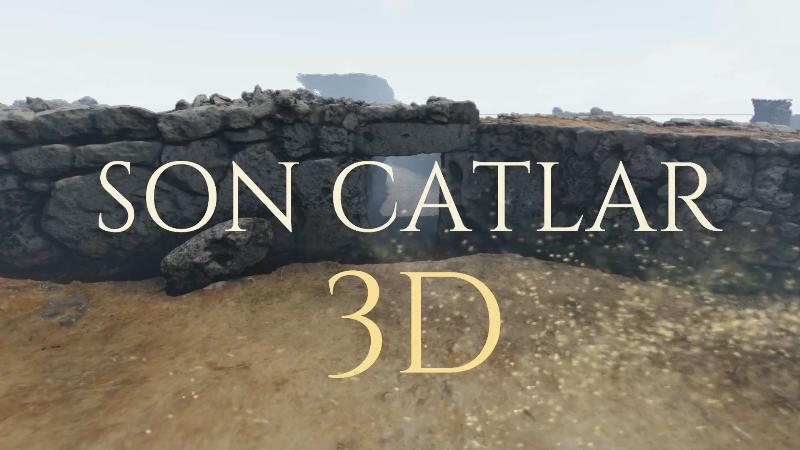 MODULAR is an interdisciplinary research project led by the University Institute of Archaeology and Historical Heritage (INAPH) from the University of Alicante, which also counts on the collaboration of the Centre for the Near East and Late Antiquity Studies (CEPOAT) from the University of Murcia and the Municipal Museum of Ciutadella de Menorca. Since 2016 it conducts several actions in Son Catlar, and in 2019 it was commissioned the writing of the management plan for the same site. For more information, visit the project’s website: https://web.ua.es/es/modular MODULAR is an interdisciplinary research project led by the University Institute of Archaeology and Historical Heritage (INAPH) from the University of Alicante, which also counts on the collaboration of the Centre for the Near East and Late Antiquity Studies (CEPOAT) from the University of Murcia and the Municipal Museum of Ciutadella de Menorca. Since 2016 it conducts several actions in Son Catlar, and in 2019 it was commissioned the writing of the management plan for the same site. For more information, visit the project’s website: https://web.ua.es/es/modular
Son Catlar is a large Talayotic settlement located on top of a small hill at the western side of Menorca. Its most outstanding feature is an impressive outer wall, which is the best preserved in the Balearics and whose layout measures roughly 1 km long. It was built in the 6th century BC, although it was refortified in the 3rd century BC, when the latest defence technological innovations of the Ancient Mediterranean were added.
Nowadays we know about two entrances to the settlement: the North gate and the bent gateway. The first is a direct entrance which was placed in the deepest part of the concave stretch of the outer wall, with the aim of being better protected. To its left, the stretch of the outer wall presents a zig-zag pattern, creating flanks for attacking. To its right and very close to it, there is a tower which abuts the wall. Right after crossing this North gate, there is a narrow zig-zag corridor which would force the assailants to traverse it in small groups, which would make them more vulnerable.
In 2017 another access to the settlement was located in the outer wall during archaeological excavations: the bent gateway. Its name is given by the L-shaped structure that hides the entrance. Also, it creates a narrow corridor flanked by a sentry box, which would have forced attackers to do a 90 degree turn and, therefore, made the access to the settlement much more difficult.
Both entrances make use of architectural features which were conceived and built, without any doubt, to defend the settlement from sieges and assaults with complex weaponry (battering rams, siege towers or ballistae).
|
Talayotic Menorca 3D: the Binissafúller wreckage
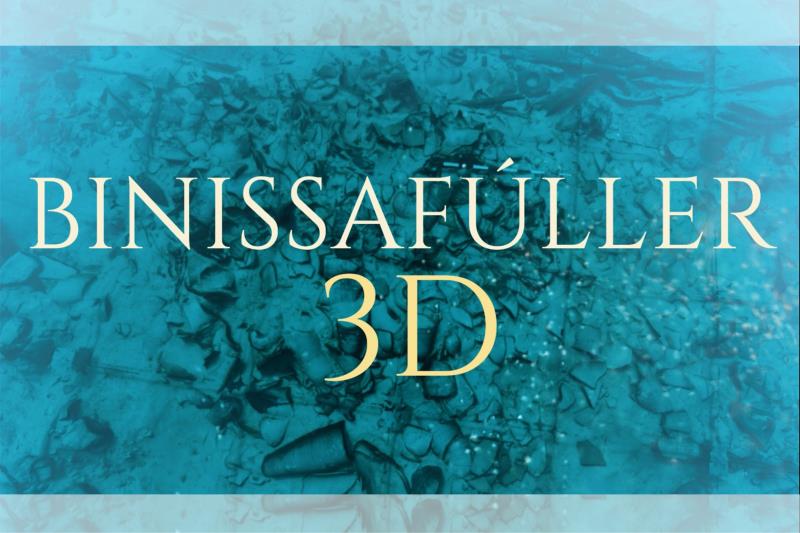 The location of a wreckage in the Binissafúller cove has been known since 1960s. The site was partially excavated in the middle of the 1970s by a team from the Museu de Menorca, the Complutense University of Madrid and the Centre for Underwater Research of Menorca. The location of a wreckage in the Binissafúller cove has been known since 1960s. The site was partially excavated in the middle of the 1970s by a team from the Museu de Menorca, the Complutense University of Madrid and the Centre for Underwater Research of Menorca.
This first archaeological project allowed for the discovery of the remains of a ship whose cargo was made of Iberian amphorae from the 3rd century BC.
Between 2006 and 2016, the Associació d'Amics del Museu de Menorca conducted four excavation seasons, with the endorsement of the Museu de Menorca and the financial support of the Consell Insular de Menorca and the Ministerio de Educación y Ciencia. These excavations shed more light on the available information about the shipwreck.
The ship was built with the system of placing the shell first, and has its frames sewn to the strake, using mortise and tenon joints. The cargo consisted in flat-mouthed Iberian wine amphorae. Both the new pottery finds and the study of the shipbuilding techniques suggest that the ship was built in the first half of the 4th century BC.
|
Talayotic Menorca 3D: Research project in the Sa Mola hypogeum
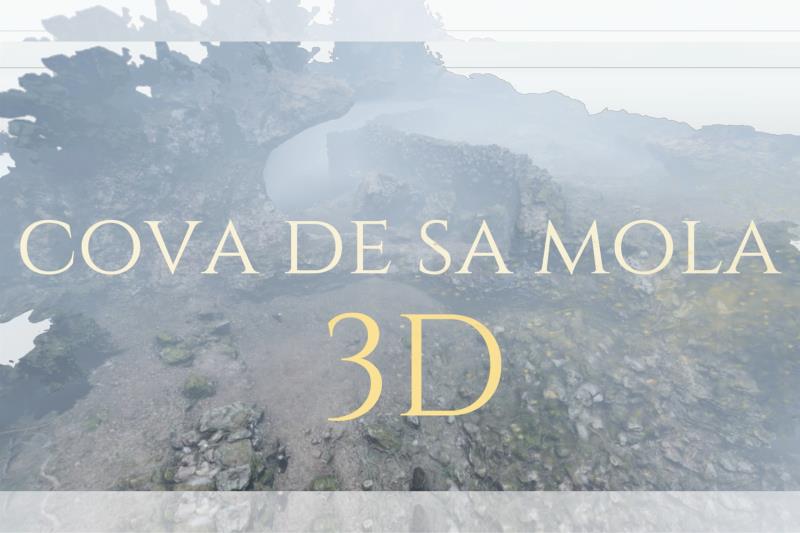 On the occasion of the organization of the “Joan Flaquer and the enigma of the 400 cups” exhibition, the team of archaeologists from the Museum of Menorca started a research project in the Sa Mola hypogeum. The main aim of this project was to solve a scientific issue, which has existed over a hundred years, by conducting an excavation and reinterpreting this archaeological site with current recording systems and methodologies. On the occasion of the organization of the “Joan Flaquer and the enigma of the 400 cups” exhibition, the team of archaeologists from the Museum of Menorca started a research project in the Sa Mola hypogeum. The main aim of this project was to solve a scientific issue, which has existed over a hundred years, by conducting an excavation and reinterpreting this archaeological site with current recording systems and methodologies.
Two main facts constituted the starting point of the project, which involved 3D documentation and an archaeological test pit excavated outside the hypogeum: the recording of the hypogeum or rock-cut tomb number 6 at the Sa Mola necropolis, which was excavated by Joan Flaquer and Vives Escudero between 1915 and 1916; and an assemblage of prehistoric cups from the private Flaquer collection, which were located in a deposit outside this cave.
The test pit allowed for the identification of the excavation carried out by Joan Flaquer and Vives Escudero. Also, in a sector within the test pit which preserved the intact stratigraphic sequence, archaeologists obtained the whole archaeological record of the location where Flaquer recovered the assemblage of cups that formed part of his collection. In this way, under some archaeological levels, which were formed by a deposit of quicklime burials that were taken from the inside of the hypogeum, archaeologists excavated a stratigraphic unit containing more than 50 cups mixed with quicklime and faunal remains in primary position. The assemblage dates back to the 3rd and 2nd centuries BC. And this group of cups could be related to ritual feasts and the presentation of offerings to the dead who were buried in the hypogeum.
If you wish to know more about Sa Mola and the Flaquer collection, you can take a virtual tour around the exhibition on Joan Flaquer. Moreover, in the research section of the Museum of Menorca’s website, this information will be constantly updated.
|
Talayotic Menorca in 3D: Es Càrritx Cave and Es Mussol Cave
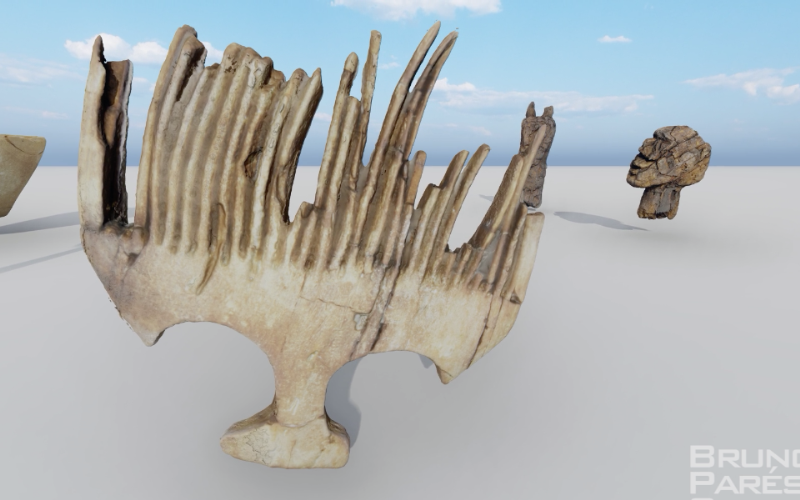 New technologies bring archaeology closer to the public by visualising and virtually manipulating both objects and entire sites. Some of the most interesting sites and objects of Menorca's heritage can now be viewed in 3D from home using a computer or mobile phone. New technologies bring archaeology closer to the public by visualising and virtually manipulating both objects and entire sites. Some of the most interesting sites and objects of Menorca's heritage can now be viewed in 3D from home using a computer or mobile phone.
The archaeologist and specialist in 3D documentation and virtualisation of heritage Bruno Parés has been commissioned to do so. The expert has been working since 2016 on various sites in Menorca, applying his knowledge of photogrammetry and terrestrial and underwater documentation. Parés has been part of, among others, the research teams that have excavated sa Mola cave or the wrecks of Binissafúller and Calescoves. The Consell Insular de Menorca (Island Council of Menorca) has commissioned him to produce the audiovisuals of the archaeological objects and sites that you will find on this website.
Bruno Parés has also documented some of the most emblematic and fragile pieces from Es Carritx and es Mussol caves. In addition, these objects have been reproduced in 3D printing in order to have a physical replica in the didactic cabinets of the Museu de Menorca and Can Saura in Ciutadella.
Anthropomorphic Carving - Cova des Mussol
This carving is part of a group of wooden pieces and small ceramic vessels found inside room 3c of the Cova des Mussol. Carving on wild olive or olive wood that reproduces the head, face and neck of a man. It has fairly realistic anatomical features, including the supraciliary arches, the jaw and the half-open lips. The individual was depicted with a slight extension of the neck so that he appears to be looking upwards.
It is well finished and has almost all of its surface polished, and in order to achieve the high degree of detail of the physical characters it was necessary to alternate between polishing and cutting. The state of preservation is fairly good, although the right ear and the end of the nose have been lost, two deviations run along what remains of the nose, and the left ear and cheek have insect holes.
Talla Antropomorfa - Cova des Mussol MENORCA by Bruno Parés on Sketchfab
Zooanthropomorphic carving - Cova des Mussol
This carving is part of a group of wooden pieces and small ceramic vessels located inside room 3c of the Cova des Mussol. The cave is located on a cliff in Cala Be, in the Punta Nati area (Ciutadella). Access to it is difficult and dangerous both by sea and by land.
Cut from wild olive or olive wood, it reproduces the head, face and neck of a being with human and animal characteristics. The face could be human, but it has two horns on the top of its head. The eyes are formed by two oblique incisions and the mouth by an horizontal one. No ears were attached and the chin is narrow but prominent. These features give it a severe and haughty expression. It was cut from a trunk or main branch that bifurcated into two growth axes. At the time of discovery it had two breaks that were repaired in the laboratory and there are abundant insect holes.
Talla Zooantropomorfa - Cova des Mussol MENORCA by Bruno Parés on Sketchfab
Wooden vessels
These two wooden vessels, along with another, were found in Room 5 of the Cova des Càrritx. They were made by hollowing out a boxwood trunk with a very sharp tool and then polishing the surfaces with an abrasive instrument. They show signs of wear and tear, which are evidence of continuous use. They may have contained a liquid or paste, as the remains of four spatulas were found nearby. It is possible that these objects are related to the funerary ritual of hair dyeing, which was documented in this cave.
Spatula
This is related to the wooden vessels, and the remains of three other similar objects were found. All of them were made from heather wood.
Comb
This object is made of boxwood, and its design is reminiscent of a bat with its wings outstretched. It was made with the help of blades and files. A wet thread covered with sand may have been used to differentiate the tines, which would have worn away the wood through friction. Like the vessels and spatulas, it would be related to the funerary ritual documented in the cave.
|
IES Cap de Llevant Secondary School project: Let’s travel back in time to Talayotic Menorca
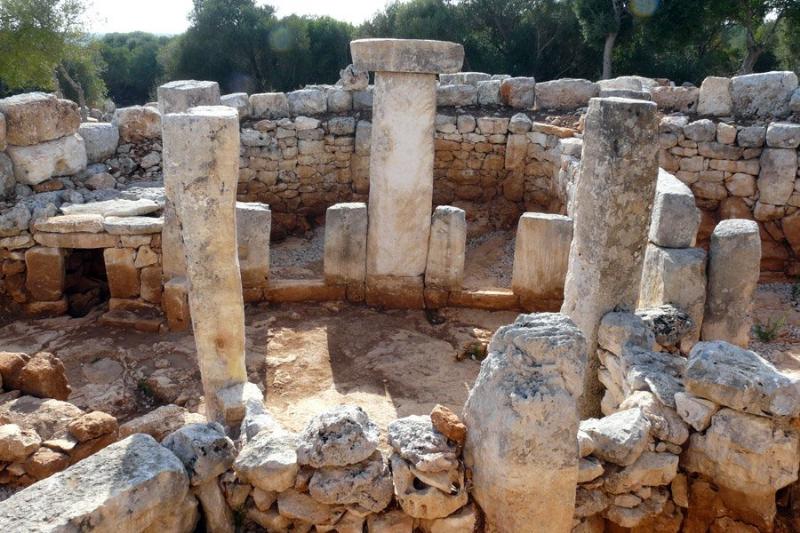 This project included a study of this culture’s most relevant aspects: community, architectural elements (talayots, taulas, dwellings, etc.) and everyday life (diet, illness management, burials, etc.). Also studied were the most noteworthy personalities in the world of Menorcan prehistoric research, like Margaret Murray or Émile Cartailhac. This project included a study of this culture’s most relevant aspects: community, architectural elements (talayots, taulas, dwellings, etc.) and everyday life (diet, illness management, burials, etc.). Also studied were the most noteworthy personalities in the world of Menorcan prehistoric research, like Margaret Murray or Émile Cartailhac.
To assist in this project, students received support from a local archaeologist on the island.
These videos are quite short in duration (around 2 minutes) and were filmed on location at archaeological sites with amateur recording equipment. As part of this educational project, each and every aspect involved, like the screenplay, design, recording and editing of the videos, was carried out exclusively by the students.
This project was designed and developed with the invaluable support and collaboration of the Consell Insular de Menorca (Island Council), as the driving force behind the candidature of Talayotic Menorca as UNESCO World Heritage. Below you can take a look at each of the final projects:
|